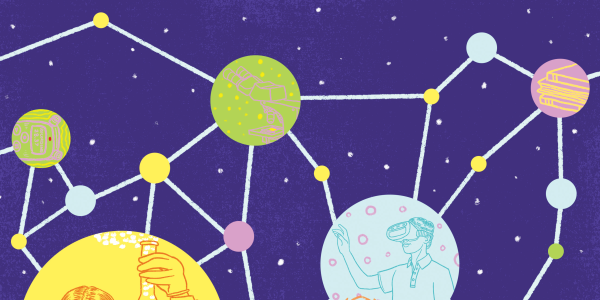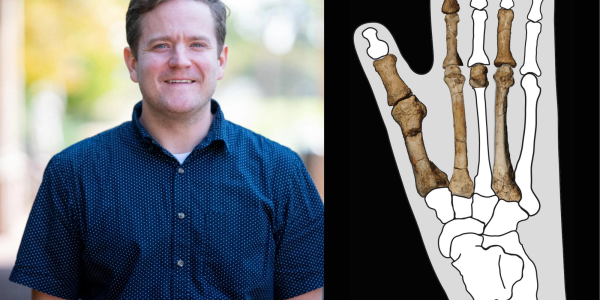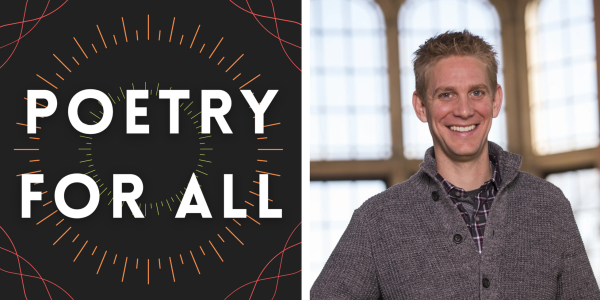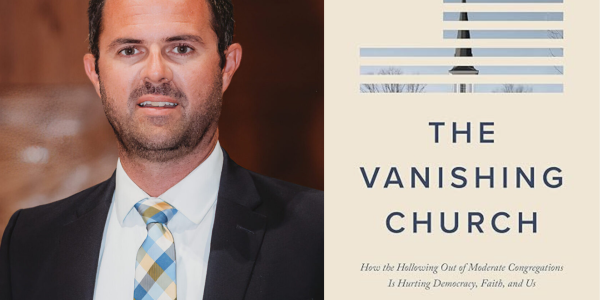Hunter, an assistant professor of drama, harnesses AI to find new ways for theater to survive and thrive.
What does it mean to go to the theater? While the industry has long faced its share of challenges — the 2020 pandemic among them — the rise of digital technology has introduced new possibilities for live performance. “Those of us who study theater have a long history of thinking about things like presence, intimacy, audience impact, and live participation,” said Elizabeth Hunter, an assistant professor of drama. “New technologies can help theater build on this history to survive and thrive in the digital age.”
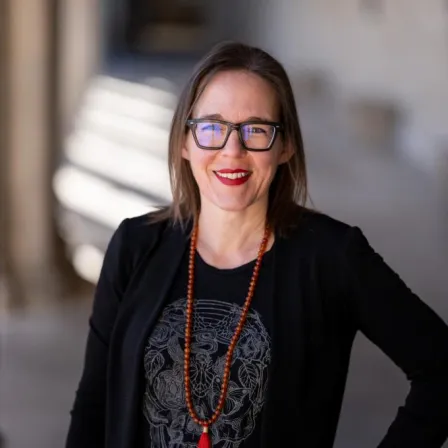
The latest project from Hunter’s theater and new media lab, Fabula(b), leverages digital techniques to reimagine audience participation. Using augmented reality, artificial intelligence, motion capture, and physical performance, the lab is currently resurrecting the work of Henry “Box” Brown, a formerly enslaved person who escaped in 1849 by mailing himself in a wooden crate from Virginia to Philadelphia. Brown went on to become a celebrated author, speaker, and performer in a popular style of live theater called “panorama,” which used moving painted scenery as a backdrop. Brown’s moving panorama, “Mirror of Slavery,” depicted the evils of slavery, his escape, and a future with universal emancipation.
For their project, “VISIBLE,” Hunter’s team is combing through archival descriptions of Brown’s performance to create language prompts for an AI image generator, which will help them reimagine what Brown’s work might have looked like. While the AI technology is relatively new, Hunter said it’s helping make an important point: historical recreations are always speculative. The new AI-produced images will appear in an app the team is creating for mobile augmented reality. Using their smartphone, users will be able to superimpose an augmented reality canvas based on Brown’s panorama onto their own physical environment.
Down the road, Hunter’s lab hopes to add more layers to the mobile experience, such as motion-captured dance and spoken word performance. Hunter said WashU’s digital transformation efforts have been instrumental in the development of her project. In recent years, WashU has been able to hire a digital humanities librarian, establish a Digital Solutions Studio, and cultivate skilled student coders — all resources Hunter utilized in creating “VISIBLE.”
“Both the university and Arts & Sciences did a great job listening to faculty and responding to areas that needed support,” Hunter said.
This story is a part of a larger feature about WashU’s digital transformation initiative, which appeared in the Spring 2025 issue of Ampersand magazine. See more stories from the magazine and browse our archives.

